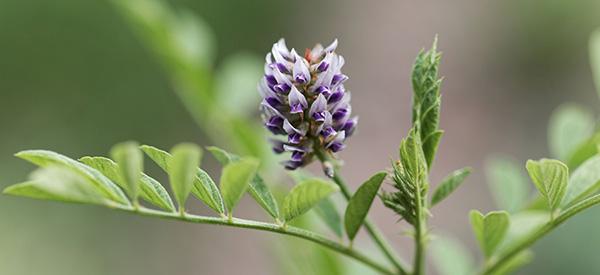
Licorice
Licorice or Liquorice (Glycyrrhiza glabra) is a sweet-sounding name that relates to candies that some people love and others hate. But, it is a plant you can grow. Licorice is an ingredient in some herbal supplements, teas, or candies. The root is the most popular and useful part of the plant. Licorice root sweetness is described as 30 to 50 times the sweetness of sugar but is more lasting and quite tart. It is also a flavoring agent in tobacco, blended cigarettes, and candies. However, there might be licorice candies that contain anise instead of licorice extract owing to their similar sweet taste.
Licorice is a perennial herb that belongs to the legume or Fabaceae family. It is native to Southern Europe, the Mediterranean, and some parts of Asia. Its history dates back to the ancient times when it was used as a food flavoring and herbal medicine. For the most part, apothecaries used it as a treatment for respiratory illnesses and skin ailments. In Egypt, it was used as a sweet drink locally known as mai-sus.
The licorice plant is cultivated mostly for commercial purposes in countries like Spain, Italy, Germany, Southern Russia, and Syria. It is also grown in France and China, which constitute the world leaders in Licorice export along with Uzbekistan and Iran. Some regions in the United States also cultivate licorice for sale in many grocery stores.
Related: The Complete Map of Edible Plants: Find Out What You Have in Your Area! (Video)
How To Identify Licorice
Licorice appeals as an image of glossy, gelled and swirling candy that often comes in many fruitful flavors. Although touted as a healthy snack because it contains no fat, licorice is also hounded with toxicity issues. But how exactly do you identify the licorice plant?
- Leaf. Licorice is a woody deciduous plant with green and oval or lanceolate leaves. The leaves are a compound of about four to eight pairs of leaflets. They are alternate and measure around 3 to 6 inches long and less than an inch wide.

- Flower. Axillary clusters of blue or lavender flowers dot the licorice plant during the summer season. Some flowers are light pink or light blue that are about half to an inch wide. It is funnel-shaped and looks similar to a sweet-pea flower in clusters of four.
- Roots. Roots are the most essential part of the plant. The roots contain the sweet substance glycyrrhizin. It is soft, fibrous, and flexible with a yellow color on the inside. Licorice has an extensive root system with a tap root that can grow up to 1.2 meters underground. In permeable and favorable soil conditions, its rhizomatous root can extend up to 10 meters.
- Seeds. Licorice seeds are legumes that are ellipsoid in shape or wide at the middle and taper at the end. It is about 8 to 10 mm in size and enclosed in a pitted pod where each pod contains 3 to 5 licorice seeds.
- Stems. The stems of the licorice are upright and they can grow up to 3 to 3.3 feet tall. The colors are either cream that dries into tan, or gold that turns to yellow when dry. It is solitary with a hairy surface (pubescent) and is aromatic.
Related: Plant Identification Guide – 400 Wild Plants That You Can Forage For (Video)
Licorice is just one of the spices that exude a sweet taste on their own. And there are about 14 known varieties, but only 4 of them are cultivated for commercial use as a sweetener. The most common is the Glycyrrhiza glabra, where the popular licorice flavoring is extracted. Other licorice varieties are:
- Glycyrrhiza glandulifera
- Glycyrrhiza echinata
- Glycyrrhiza uralensis(Asian variety)
- Glycyrrhiza lepidota(American Licorice)
- Glycyrrhiza astragalus(European variety)
How To Grow Licorice
It is easy to propagate licorice through seeds, cuttings, or division of its rhizomes. They proliferate better in meadows and fields or even in disturbed habitats. But you can also grow them in containers so they can easily overwinter in the shade. With proper care, the plants will develop some three to four months after planting. This plant can live up to four years when it will be ready for harvest.
Licorice is a tropical perennial plant that is hardy in USDA zones between 9 to 11.
Growing Licorice from Seeds
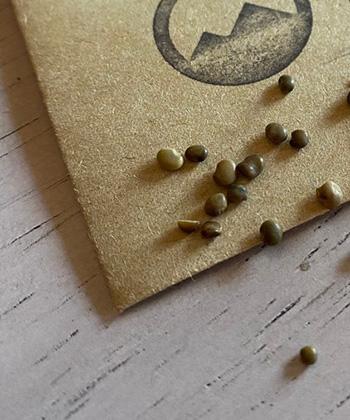 You may buy licorice cultivar seeds for growing in some specialty and online stores. Soak these seeds in a clean glass jar with lukewarm water for two hours. Stratify the seeds for 3 to 4 weeks by folding them in a moistened towel. Place the towel in a bag and store it in the refrigerator, constantly moistening it when necessary until the seeds germinate.
You may buy licorice cultivar seeds for growing in some specialty and online stores. Soak these seeds in a clean glass jar with lukewarm water for two hours. Stratify the seeds for 3 to 4 weeks by folding them in a moistened towel. Place the towel in a bag and store it in the refrigerator, constantly moistening it when necessary until the seeds germinate.
Sow the germinated seeds in well-draining potting soil and cover it lightly with the medium. Keep the soil moist until the seedlings grow their first set of leaves. Transplant the seedlings after the final frost in spring, preferably during a cloudy or overcast day.
Growing Licorice from Cuttings
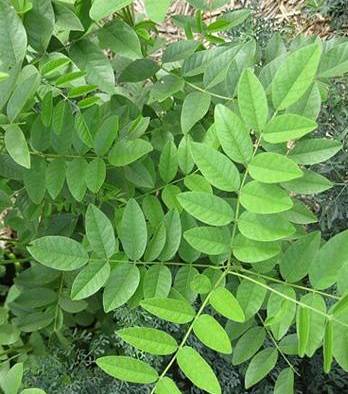 If you are growing a healthy cultivar, propagating through cutting is the easiest way of growing licorice. It will also ensure that you will grow a plant similar to its parent variety.
If you are growing a healthy cultivar, propagating through cutting is the easiest way of growing licorice. It will also ensure that you will grow a plant similar to its parent variety.
Cut 4 to 6 inches of the licorice stem, wrap it in a moist towel, and put it in a plastic bag overnight. Plant the cutting in a moist, fertile, and well-draining soil 1 to 1 ½ feet apart.
Keep everything moist until new leaves emerge from the cutting. Once established, the licorice plant hardly needs maintenance as long as it remains under full sun and part shade.
Related: 10 Plants That You Should Never Plant Together (Video)
Growing Licorice from Division
Licorice is a rhizomatous plant that can also propagate through root division. You can divide the root in spring or fall while making sure that each division has at least one bud. Plant it in a loosened soil with a hole at about 50 cm deep and 60 cm wide. Licorice prefers sandy-loam soil that is well-draining, so add compost or sand if the medium is clayish. It is best to grow licorice in a sunny area where it can also receive an afternoon shade.
Plant Care and Maintenance
The licorice plant enjoys sunshine and detests winter. If you live in colder climates, grow your licorice in a pot and keep it indoors during winter. In places where it doesn’t overwinter, you may grow it in a greenhouse while using a deep pot. However, licorice grows best in the ground outside to allow its roots to spread.
Here is the easy-to-remember licorice plant growing requirements: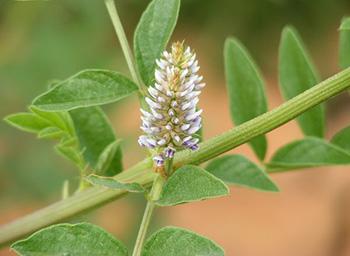
- A sunny location with ample afternoon shade
- Light, rich, well-draining, and slightly neutral soil
- Regular and deep watering (reduce watering in winter)
- An average temperature of 60 to 85°F (15-30°C)
- Mulching
How To Harvest Licorice Roots
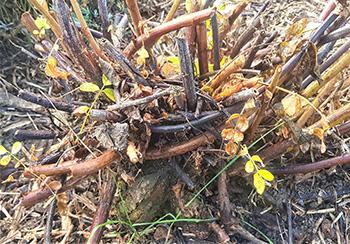 Some two to three years after planting, the licorice root is ready for harvest. The best time to harvest is in the autumn. By this time, the plant has completed its growing phase. You can harvest licorice by digging the horizontal roots with a sharp spade, preserving the taproot. With the taproot intact, the plant will still be able to grow its offspring. Divide the licorice roots using secateurs or scissors.
Some two to three years after planting, the licorice root is ready for harvest. The best time to harvest is in the autumn. By this time, the plant has completed its growing phase. You can harvest licorice by digging the horizontal roots with a sharp spade, preserving the taproot. With the taproot intact, the plant will still be able to grow its offspring. Divide the licorice roots using secateurs or scissors.
Air-dry the roots by tying them in a small bundle and hanging them in a cool, dry place. Air-drying prevents the roots from getting moldy. The licorice roots dry thoroughly at about three to six weeks. The dry licorice roots are now ready for brewing into teas and drinks. Dried licorice roots can keep up for several months without losing their potency.
What Licorice Is Good For And Natural Remedies Made From It
Licorice is a wonder herb that remains popular even during the Dark Ages. Its root extract carries many medicinal values. It is an adaptogenic herb that is beneficial for regulating hormonal balance to stimulate good mental health. Thus, it can ward off the effects of stress, depression, and anxiety.
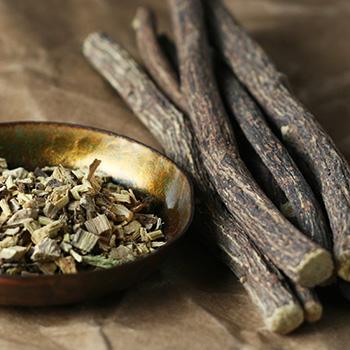 The antiviral, antifungal and antibacterial properties of the licorice help combat infections too. The licorice root gel is an effective cure for skin disorders and can reduce pain and inflammation in canker sores.
The antiviral, antifungal and antibacterial properties of the licorice help combat infections too. The licorice root gel is an effective cure for skin disorders and can reduce pain and inflammation in canker sores.
For a long time, licorice roots have also served as a treatment for respiratory disorders. The tea made from licorice roots is an effective expectorant to cure cough and colds. It is also an important herb for the treatment of stomach disorders and for cleaning the colon.
In small quantities, licorice helps in the proper functioning of the circulatory system. Thus, it may improve blood flow and reduce the risk of heart diseases. Licorice can further detoxify the body to protect and strengthen liver function.
Taking licorice root extract or tea helps women manage menstrual disorders. Likewise, men with prostate problems may also find a cure in the herb. Licorice is also an anaphrodisiac that suppresses or lowers the libido in both men and women.
When taken properly, licorice roots can cure the following ailments:
- Aphthous ulcers

- Skin problems (psoriasis, eczema, rashes, athlete’s foot)
- Eye problems (cataract, myopia)
- Respiratory disorders
- Liver diseases
- Hypoglycemia
- Anxiety and other mental health issues
- Alopecia
- Reproductive health problems (PCOS, PMS, menopausal, prostate cancer, infertility)
- Low blood pressure
- Nausea and altitude sickness
What Parts Of Licorice Is Used For Remedies
Glycyrrhiza glabra is an edible plant, but its most noteworthy part is the roots. The root extract is not only used as a sweetener or flavoring agent but can also cure certain diseases. It is also prepared as an infusion or decoction and made into tinctures, syrups, and pills.
The wooden chips of the licorice roots are chewed raw to release their sweetness. Today, you may also find licorice leaves in select groceries. Loose leaves are made into teas. However, the leaves are not as popular as the roots.
Sweet and Healing Licorice Tea
Ingredients
- 1 tbsp dried licorice root slices
- 1 cup water
- 1 cinnamon stick or ½ tsp ground cinnamon
- Ginger, optional
Steps
- In a saucepan, add the licorice roots, ginger, and cinnamon stick to water and bring to a boil. If using ground cinnamon, check step 2. You may also increase the amount using the ratio of 1:1 of licorice root to water.

- Stir in ground cinnamon once the water has started to boil already. Then, lower the temperature to let the licorice tea simmer for 10 minutes.

- Strain the decoction into a cup and enjoy your sweet healing tea hot or warm. Stir before drinking when using ground cinnamon since particles may settle at the bottom of the cup.

How to Use this Remedy
This decoction is an excellent cure for sore throat with the added healing effect of ginger. Children over 50 lbs. can drink 1/3 cup of licorice tea three times a day for cough. There is no specific dosage for adults, but they should limit the intake to avoid side effects.
With the cold and influenza season in full swing, we need all the help we can get to keep our immune systems healthy and strong. Here are a few of Nicole’s top picks that are found in the Essential Winter Defense Bundle. Whether maintaining lung health, boosting immunity, or reducing fevers, each herb supports overall well-being this winter and beyond.
What Plants Resemble Licorice
| FEATURE | Licorice (Glycyrrhiza glabra) | Wild Licorice (Glycyrrhiza lepidota) | Holy Clover (Onobrychis viciifolia) |
|---|---|---|---|
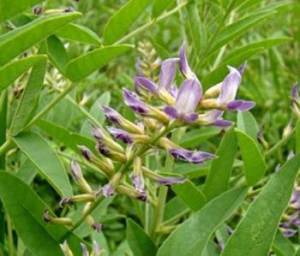 | 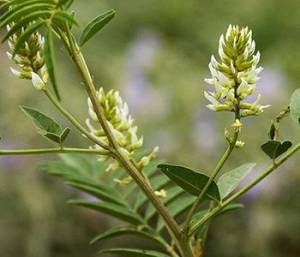 | 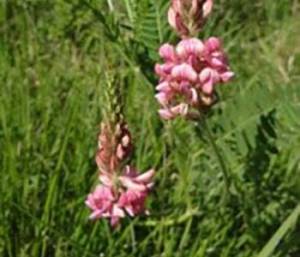 | |
| Size | 3 to 4 ft | 1 to 3 ft | 1 to 2 ft |
| Leaves | Ellipsoid, green, alternate; compound | Ovate; alternate; green | Long, narrow, and sharp; light green |
| Flowers | Clustered; funnel-shaped; blue or lavender | Dense; White to cream-colored flowers | Lanceolate; symmetrical; hairy; alternate |
| Stem/Trunk | Herbaceous; straight; hairy; cream/tan, gold/yellow | Herbaceous; upright; hairy | Upright; herbaceous |
| Scent | Edgy aroma with sweet notes of anise, tarragon and fennel | Fragrant anise-like scent | Unpronounced smell with floral notes |
Warnings And Cautions
Licorice root is a good pacifier of other herbal remedies that enhances their effectiveness when taken in smaller doses. It is also considered safe as a food ingredient. In large amounts and prolonged consumption, licorice may pose potential adverse side effects such as headache, increased blood pressure, and absence of menstrual flow. Thus, people should limit the consumption and dosage when taking licorice root.
The plant may also cause preterm delivery and miscarriage and should be avoided by pregnant women. It is also not safe for the consumption of lactating mothers. Likewise, women should avoid prolonged use to avoid the risk of breast, uterine, or ovarian cancer.
Licorice can enhance the effect of medications; therefore, it should be avoided by people taking maintenance medicines. People who suffer from the following conditions and taking medication should avoid taking licorice root as an herbal alternative: High blood pressure, Water retention, Diabetes, Kidney problems, Heart problems, Liver cirrhosis, Erectile dysfunction, Low potassium.
Do not take licorice root for more than six weeks as it can cause electrolyte imbalance. It should also not be taken with hijiki or wild sea vegetables as the combination is toxic and deadly. To be safe, always check with your doctor about complementary medicines before starting a medication.
You may also like:
 Soothing Elixir For Cold and Flu Season
Soothing Elixir For Cold and Flu Season
The Plant That Is Sweeter Than Sugar And Helps People With Diabetes (Video)
Foods And Herbs That Increase Libido and Others That Kill It
Sugar Substitutes for Diabetics: Five Sugars That are OK to Eat






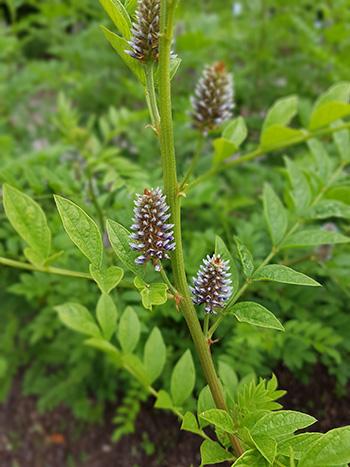
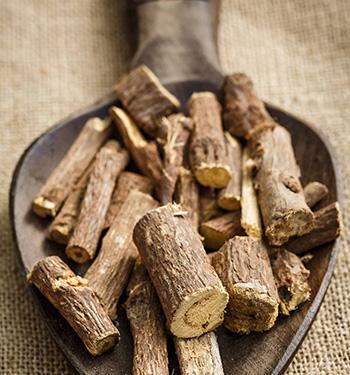
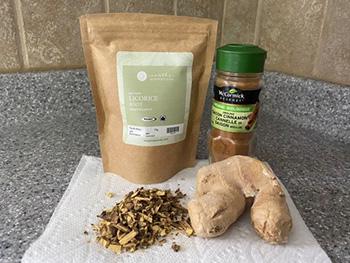
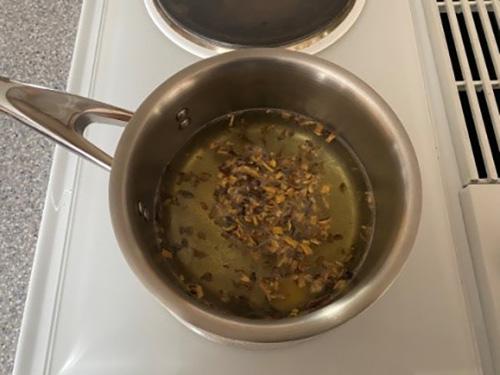
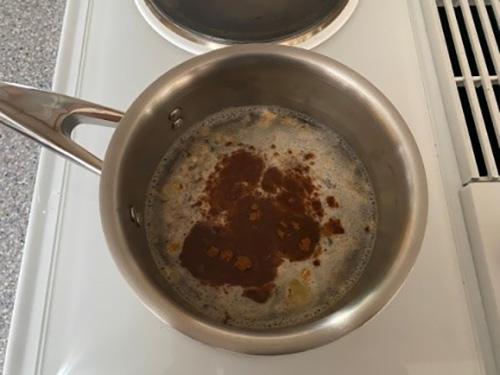
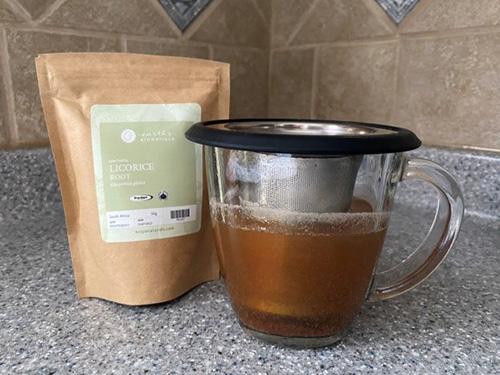
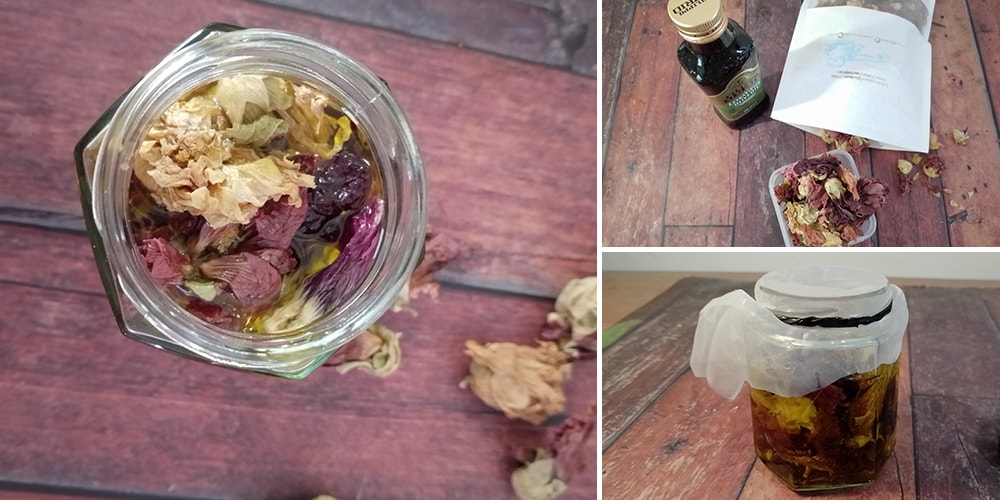
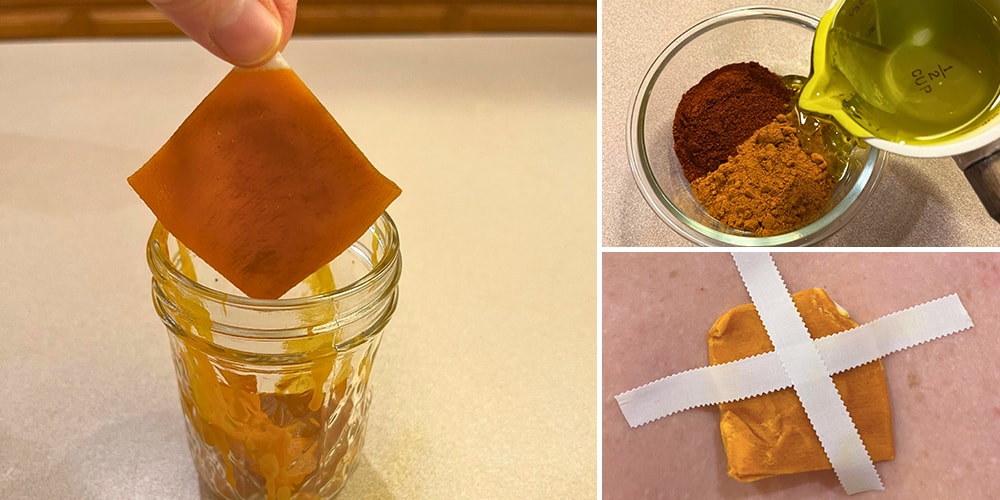
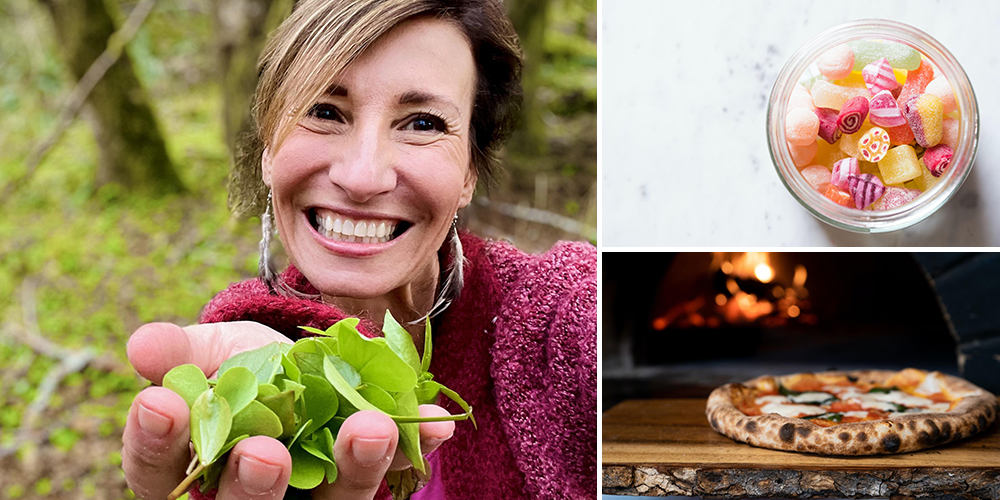
Good Morning, Read with great excitement your article on Licorice. I live in Western Oregon. In the woods out here we have a small fern like looking plant that grows on Maple trees under layers of moss. I attaches it self to the bark, is the size of beverage straws. They are tentacle like and are brown on the surface. Peeling them reveals a whiteish colored woody stem. there is a good licorice flavor one gets out of them when holding in mouth. You ever heard of this plant before?
Hi Steve,
Thank you for your comment. We are glad to hear that you liked our article.
From your description, the plant might be Licorice Fern. Its favorite place to grow is on the bigleaf maple trees.
https://en.wikipedia.org/wiki/Polypodium_glycyrrhiza
https://calscape.org/Polypodium-glycyrrhiza-(Licorice-Fern)
However, the plants should be identified in their environment, by looking at all their parts (leaves, flowers, color, root). There are also some useful apps out there to help you identify plants but always double-check the result! Good ones to try include: Picture this, PlantNet, and PlantSnap.
Many blessings and good health!
Did I read or licorice helps control blood sugar? If so do you have more details?
Hi Jimmy,
Licorice root has become increasingly popular in studies related to diabetes.
Licorice root contains natural substances called amorfrutins that reduce blood sugar levels. These amorfrutins also prevent fatty liver, which often arises in people with diabetes. However, the level of amorfrutins found in licorice root might not be high enough to actually replace conventional treatment.
It can also have an adverse effect on certain medications including blood pressure medications and cholesterol medications. To be safe, always check with your doctor about complementary medicines before starting a medication.
Many blessings and good health!
Where can I buy licorice seeds or plants?
I was going to look for Organic Licorice Candy you say dont eat it forever but i wonder about Lozenges or just candy to suck on? Thank you for the information always
Yes , you mention that licorice may help with blood sugar ( I have heard this elsewhere as well) but then, you say in the warnings that if you have diabetes you should NOT use licorice! Conflicting information, that should be explained further.
My naturopathic doctor has given me instructions to take licorice extract for my diabetes.
Can you tell me where to purchase Licorice and Verbena plants?
you can buy both at this site https://plantaddicts.com/search-results-page
Can you tell me how to cut these roots? I have tried scissors and knives. I can’t seem to cut through them. Maybe a cleaver, or a chainsaw?